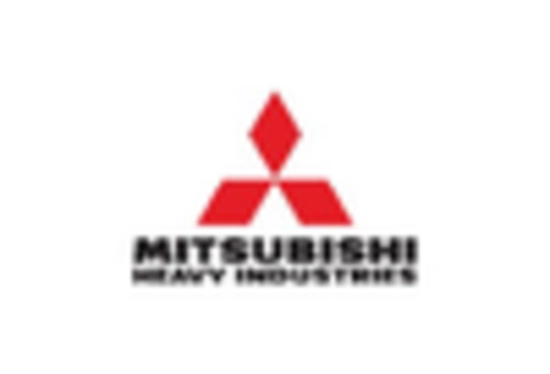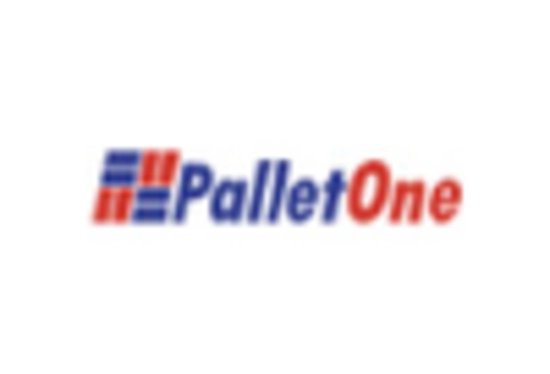-
EXECUTIVE SUMMARY
-
MARKET INTRODUCTION
-
Definition
-
Scope of the Study
- Research Objective
- Assumptions
- Limitations
-
RESEARCH METHODOLOGY
-
Overview
-
Data Mining
-
Secondary Research
-
Primary Research
- Primary Interviews and Information Gathering Process
- Breakdown of Primary Respondents
-
Forecasting Modality
-
Market Size Estimation
- Bottom-Up Approach
- Top-Down Approach
-
Data Triangulation
-
Validation
-
MARKET DYNAMICS
-
Overview
-
Drivers
-
Restraints
-
Opportunities
-
MARKET FACTOR ANALYSIS
-
Value Chain Analysis
-
Porter’s Five Forces Analysis
- Bargaining Power of Suppliers
- Bargaining Power of Buyers
- Threat of New Entrants
- Threat of Substitutes
- Intensity of Rivalry
-
COVID-19 Impact Analysis
- Market Impact Analysis
- Regional Impact
- Opportunity and Threat Analysis
-
GLOBAL PALLETS MARKET, BY MATERIAL
-
Overview
-
Metal
-
Wood
-
Plastic via Injection Molding
-
Plastic via Other Methods
-
Corrugated Paper
-
GLOBAL PALLETS MARKET, BY END-USER
-
Overview
-
Food and Beverage
-
Chemical
-
Retail
-
Pharmaceutical
-
Others
-
GLOBAL PALLETS MARKET, BY TYPE
-
Overview
-
Rackable
-
Nestable
-
Stackable
-
Display
-
GLOBAL PALLETS MARKET, BY REGION
-
Overview
-
North America
- U.S.
- Canada
-
Europe
- Germany
- France
- U.K
- Italy
- Spain
- Rest of Europe
-
Asia-Pacific
- China
- India
- Japan
- South Korea
- Australia
- Rest of Asia-Pacific
-
Rest of the World
- Middle East
- Africa
- Latin America
-
COMPETITIVE LANDSCAPE
-
Overview
-
Competitive Analysis
-
Market Share Analysis
-
Major Growth Strategy in the Global Pallets Market,
-
Competitive Benchmarking
-
Leading Players in Terms of Number of Developments in the Global Pallets Market,
-
Key developments and Growth Strategies
- New Material Launch/End-user Deployment
- Merger & Acquisitions
- Joint Ventures
-
Major Players Financial Matrix
- Sales & Operating Income, 2022
- Major Players R&D Expenditure. 2022
-
COMPANY PROFILES
-
Schoeller Allibert Services B.V. (Schoeller Allibert)
- Company Overview
- Financial Overview
- Materials Offered
- Key Developments
- SWOT Analysis
- Key Strategies
-
Craemer Holding GmbH (CRAEMER)
- Company Overview
- Financial Overview
- Materials Offered
- Key Developments
- SWOT Analysis
- Key Strategies
-
Rehrig Pacific Holdings, Inc. (Rehrig Pacific)
- Company Overview
- Financial Overview
- Materials Offered
- Key Developments
- SWOT Analysis
- Key Strategies
-
Falkenhahn AG (Falkenhahn)
- Company Overview
- Financial Overview
- Materials Offered
- Key Developments
- SWOT Analysis
- Key Strategies
-
Menasha corporation
- Company Overview
- Financial Overview
- Materials Offered
- Key Developments
- SWOT Analysis
- Key Strategies
-
MILLWOOD, INC.
- Company Overview
- Financial Overview
- Materials Offered
- Key Developments
- SWOT Analysis
- Key Strategies
-
CABKA Group GmbH (CABKA)
- Company Overview
- Financial Overview
- Materials Offered
- Key Developments
- SWOT Analysis
- Key Strategies
-
LOSCAM International Holdings Co., Ltd. (LOSCAM)
- Company Overview
- Financial Overview
- Materials Offered
- Key Developments
- SWOT Analysis
- Key Strategies
-
Brambles Limited
- Company Overview
- Financial Overview
- Materials Offered
- Key Developments
- SWOT Analysis
- Key Strategies
-
UFP Industries, Inc. (PalletOne)
- Company Overview
- Financial Overview
- Materials Offered
- Key Developments
- SWOT Analysis
- Key Strategies
-
APPENDIX
-
References
-
Related Reports
-
-
LIST OF TABLES
-
GLOBAL PALLETS MARKET, SYNOPSIS, 2025 - 2034
-
GLOBAL PALLETS MARKET, ESTIMATES & FORECAST, 2025 - 2034 (USD BILLION)
-
GLOBAL PALLETS MARKET, BY MATERIAL, 2025 - 2034 (USD BILLION)
-
GLOBAL PALLETS MARKET, BY END-USER, 2025 - 2034 (USD BILLION)
-
GLOBAL PALLETS MARKET, BY TYPE, 2025 - 2034 (USD BILLION)
-
NORTH AMERICA PALLETS MARKET, BY MATERIAL, 2025 - 2034 (USD BILLION)
-
NORTH AMERICA PALLETS MARKET, BY END-USER, 2025 - 2034 (USD BILLION)
-
NORTH AMERICA PALLETS MARKET, BY TYPE, 2025 - 2034 (USD BILLION)
-
NORTH AMERICA PALLETS MARKET, BY COUNTRY, 2025 - 2034 (USD BILLION)
-
U.S. PALLETS MARKET, BY MATERIAL, 2025 - 2034 (USD BILLION)
-
U.S. PALLETS MARKET, BY END-USER, 2025 - 2034 (USD BILLION)
-
U.S. PALLETS MARKET, BY TYPE, 2025 - 2034 (USD BILLION)
-
CANADA PALLETS MARKET, BY MATERIAL, 2025 - 2034 (USD BILLION)
-
CANADA PALLETS MARKET, BY END-USER, 2025 - 2034 (USD BILLION)
-
CANADA PALLETS MARKET, BY TYPE, 2025 - 2034 (USD BILLION)
-
EUROPE PALLETS MARKET, BY MATERIAL, 2025 - 2034 (USD BILLION)
-
EUROPE PALLETS MARKET, BY END-USER, 2025 - 2034 (USD BILLION)
-
EUROPE PALLETS MARKET, BY TYPE, 2025 - 2034 (USD BILLION)
-
EUROPE PALLETS MARKET, BY COUNTRY, 2025 - 2034 (USD BILLION)
-
GERMANY PALLETS MARKET, BY MATERIAL, 2025 - 2034 (USD BILLION)
-
GERMANY PALLETS MARKET, BY END-USER, 2025 - 2034 (USD BILLION)
-
GERMANY PALLETS MARKET, BY TYPE, 2025 - 2034 (USD BILLION)
-
FRANCE PALLETS MARKET, BY MATERIAL, 2025 - 2034 (USD BILLION)
-
FRANCE PALLETS MARKET, BY END-USER, 2025 - 2034 (USD BILLION)
-
FRANCE PALLETS MARKET, BY TYPE, 2025 - 2034 (USD BILLION)
-
ITALY PALLETS MARKET, BY MATERIAL, 2025 - 2034 (USD BILLION)
-
ITALY PALLETS MARKET, BY END-USER, 2025 - 2034 (USD BILLION)
-
ITALY PALLETS MARKET, BY TYPE, 2025 - 2034 (USD BILLION)
-
SPAIN PALLETS MARKET, BY MATERIAL, 2025 - 2034 (USD BILLION)
-
SPAIN PALLETS MARKET, BY END-USER, 2025 - 2034 (USD BILLION)
-
SPAIN PALLETS MARKET, BY TYPE, 2025 - 2034 (USD BILLION)
-
U.K PALLETS MARKET, BY MATERIAL, 2025 - 2034 (USD BILLION)
-
U.K PALLETS MARKET, BY END-USER, 2025 - 2034 (USD BILLION)
-
U.K PALLETS MARKET, BY TYPE, 2025 - 2034 (USD BILLION)
-
REST OF EUROPE PALLETS MARKET, BY MATERIAL, 2025 - 2034 (USD BILLION)
-
REST OF EUROPE PALLETS MARKET, BY END-USER, 2025 - 2034 (USD BILLION)
-
REST OF EUROPE PALLETS MARKET, BY TYPE, 2025 - 2034 (USD BILLION)
-
ASIA PACIFIC PALLETS MARKET, BY MATERIAL, 2025 - 2034 (USD BILLION)
-
ASIA PACIFIC PALLETS MARKET, BY END-USER, 2025 - 2034 (USD BILLION)
-
ASIA PACIFIC PALLETS MARKET, BY TYPE, 2025 - 2034 (USD BILLION)
-
ASIA PACIFIC PALLETS MARKET, BY COUNTRY, 2025 - 2034 (USD BILLION)
-
JAPAN PALLETS MARKET, BY MATERIAL, 2025 - 2034 (USD BILLION)
-
JAPAN PALLETS MARKET, BY END-USER, 2025 - 2034 (USD BILLION)
-
JAPAN PALLETS MARKET, BY TYPE, 2025 - 2034 (USD BILLION)
-
CHINA PALLETS MARKET, BY MATERIAL, 2025 - 2034 (USD BILLION)
-
CHINA PALLETS MARKET, BY END-USER, 2025 - 2034 (USD BILLION)
-
CHINA PALLETS MARKET, BY TYPE, 2025 - 2034 (USD BILLION)
-
INDIA PALLETS MARKET, BY MATERIAL, 2025 - 2034 (USD BILLION)
-
INDIA PALLETS MARKET, BY END-USER, 2025 - 2034 (USD BILLION)
-
INDIA PALLETS MARKET, BY TYPE, 2025 - 2034 (USD BILLION)
-
AUSTRALIA PALLETS MARKET, BY MATERIAL, 2025 - 2034 (USD BILLION)
-
AUSTRALIA PALLETS MARKET, BY END-USER, 2025 - 2034 (USD BILLION)
-
AUSTRALIA PALLETS MARKET, BY TYPE, 2025 - 2034 (USD BILLION)
-
SOUTH KOREA PALLETS MARKET, BY MATERIAL, 2025 - 2034 (USD BILLION)
-
SOUTH KOREA PALLETS MARKET, BY END-USER, 2025 - 2034 (USD BILLION)
-
SOUTH KOREA PALLETS MARKET, BY TYPE, 2025 - 2034 (USD BILLION)
-
REST OF ASIA-PACIFIC PALLETS MARKET, BY MATERIAL, 2025 - 2034 (USD BILLION)
-
REST OF ASIA-PACIFIC PALLETS MARKET, BY END-USER, 2025 - 2034 (USD BILLION)
-
REST OF ASIA-PACIFIC PALLETS MARKET, BY TYPE, 2025 - 2034 (USD BILLION)
-
REST OF WORLD PALLETS MARKET, BY MATERIAL, 2025 - 2034 (USD BILLION)
-
REST OF WORLD PALLETS MARKET, BY END-USER, 2025 - 2034 (USD BILLION)
-
REST OF WORLD PALLETS MARKET, BY TYPE, 2025 - 2034 (USD BILLION)
-
REST OF WORLD PALLETS MARKET, BY COUNTRY, 2025 - 2034 (USD BILLION)
-
MIDDLE EAST PALLETS MARKET, BY MATERIAL, 2025 - 2034 (USD BILLION)
-
MIDDLE EAST PALLETS MARKET, BY END-USER, 2025 - 2034 (USD BILLION)
-
MIDDLE EAST PALLETS MARKET, BY TYPE, 2025 - 2034 (USD BILLION)
-
AFRICA PALLETS MARKET, BY MATERIAL, 2025 - 2034 (USD BILLION)
-
AFRICA PALLETS MARKET, BY END-USER, 2025 - 2034 (USD BILLION)
-
AFRICA PALLETS MARKET, BY TYPE, 2025 - 2034 (USD BILLION)
-
LATIN AMERICA PALLETS MARKET, BY MATERIAL, 2025 - 2034 (USD BILLION)
-
LATIN AMERICA PALLETS MARKET, BY END-USER, 2025 - 2034 (USD BILLION)
-
LATIN AMERICA PALLETS MARKET, BY TYPE, 2025 - 2034 (USD BILLION)
-
LIST OF FIGURES
-
RESEARCH PROCESS
-
MARKET STRUCTURE FOR THE GLOBAL PALLETS MARKET
-
MARKET DYNAMICS FOR THE GLOBAL PALLETS MARKET
-
GLOBAL PALLETS MARKET, SHARE (%), BY MATERIAL, 2022
-
GLOBAL PALLETS MARKET, SHARE (%), BY END-USER, 2022
-
GLOBAL PALLETS MARKET, SHARE (%), BY TYPE, 2022
-
GLOBAL PALLETS MARKET, SHARE (%), BY REGION, 2022
-
NORTH AMERICA: PALLETS MARKET, SHARE (%), BY REGION, 2022
-
EUROPE: PALLETS MARKET, SHARE (%), BY REGION, 2022
-
ASIA-PACIFIC: PALLETS MARKET, SHARE (%), BY REGION, 2022
-
REST OF THE WORLD: PALLETS MARKET, SHARE (%), BY REGION, 2022
-
GLOBAL PALLETS MARKET: COMPANY SHARE ANALYSIS, 2022 (%)
-
SCHOELLER ALLIBERT SERVICES B.V. (SCHOELLER ALLIBERT): FINANCIAL OVERVIEW SNAPSHOT
-
SCHOELLER ALLIBERT SERVICES B.V. (SCHOELLER ALLIBERT): SWOT ANALYSIS
-
CRAEMER HOLDING GMBH (CRAEMER): FINANCIAL OVERVIEW SNAPSHOT
-
CRAEMER HOLDING GMBH (CRAEMER): SWOT ANALYSIS
-
REHRIG PACIFIC HOLDINGS, INC. (REHRIG PACIFIC): FINANCIAL OVERVIEW SNAPSHOT
-
REHRIG PACIFIC HOLDINGS, INC. (REHRIG PACIFIC): SWOT ANALYSIS
-
FALKENHAHN AG (FALKENHAHN): FINANCIAL OVERVIEW SNAPSHOT
-
FALKENHAHN AG (FALKENHAHN): SWOT ANALYSIS
-
MENASHA CORPORATION.: FINANCIAL OVERVIEW SNAPSHOT
-
MENASHA CORPORATION.: SWOT ANALYSIS
-
MILLWOOD, INC.: FINANCIAL OVERVIEW SNAPSHOT
-
MILLWOOD, INC.: SWOT ANALYSIS
-
CABKA GROUP GMBH (CABKA): FINANCIAL OVERVIEW SNAPSHOT
-
CABKA GROUP GMBH (CABKA): SWOT ANALYSIS
-
LOSCAM INTERNATIONAL HOLDINGS CO., LTD. (LOSCAM): FINANCIAL OVERVIEW SNAPSHOT
-
LOSCAM INTERNATIONAL HOLDINGS CO., LTD. (LOSCAM): SWOT ANALYSIS
-
BRAMBLES LIMITED: FINANCIAL OVERVIEW SNAPSHOT
-
BRAMBLES LIMITED: SWOT ANALYSIS
-
UFP INDUSTRIES, INC. (PALLETONE): FINANCIAL OVERVIEW SNAPSHOT
-
UFP INDUSTRIES, INC. (PALLETONE): SWOT ANALYSIS









Leave a Comment